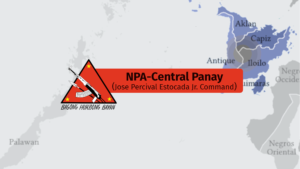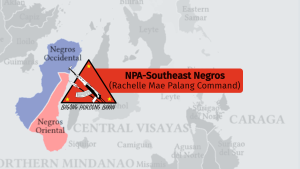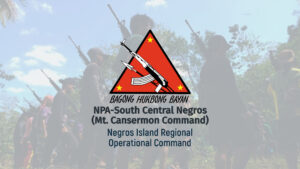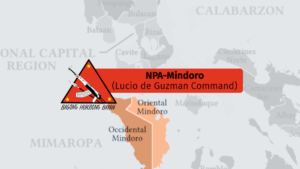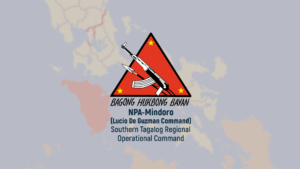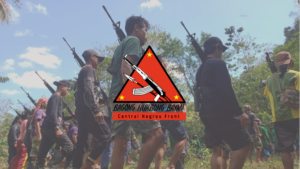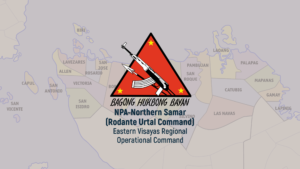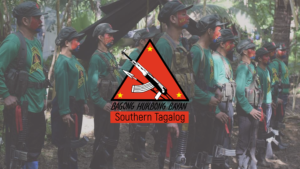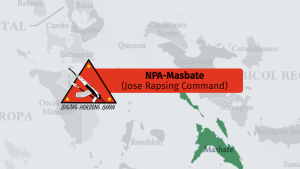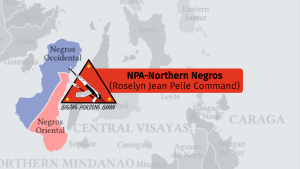Juanito Magbanua’s Final Interview: NPA Negros Island Spokesman Talks Past, Present, and Future of Philippines’ Communist Insurgency

PRWC is reposting the interview of militantwire.com with late NPA Negros Island Spokesperson Ka Juanito Magbanua. Read the full interview below.
Juanito Magbanua’s Final Interview: NPA Negros Island Spokesman Talks Past, Present, and Future of Philippines’ Communist Insurgency
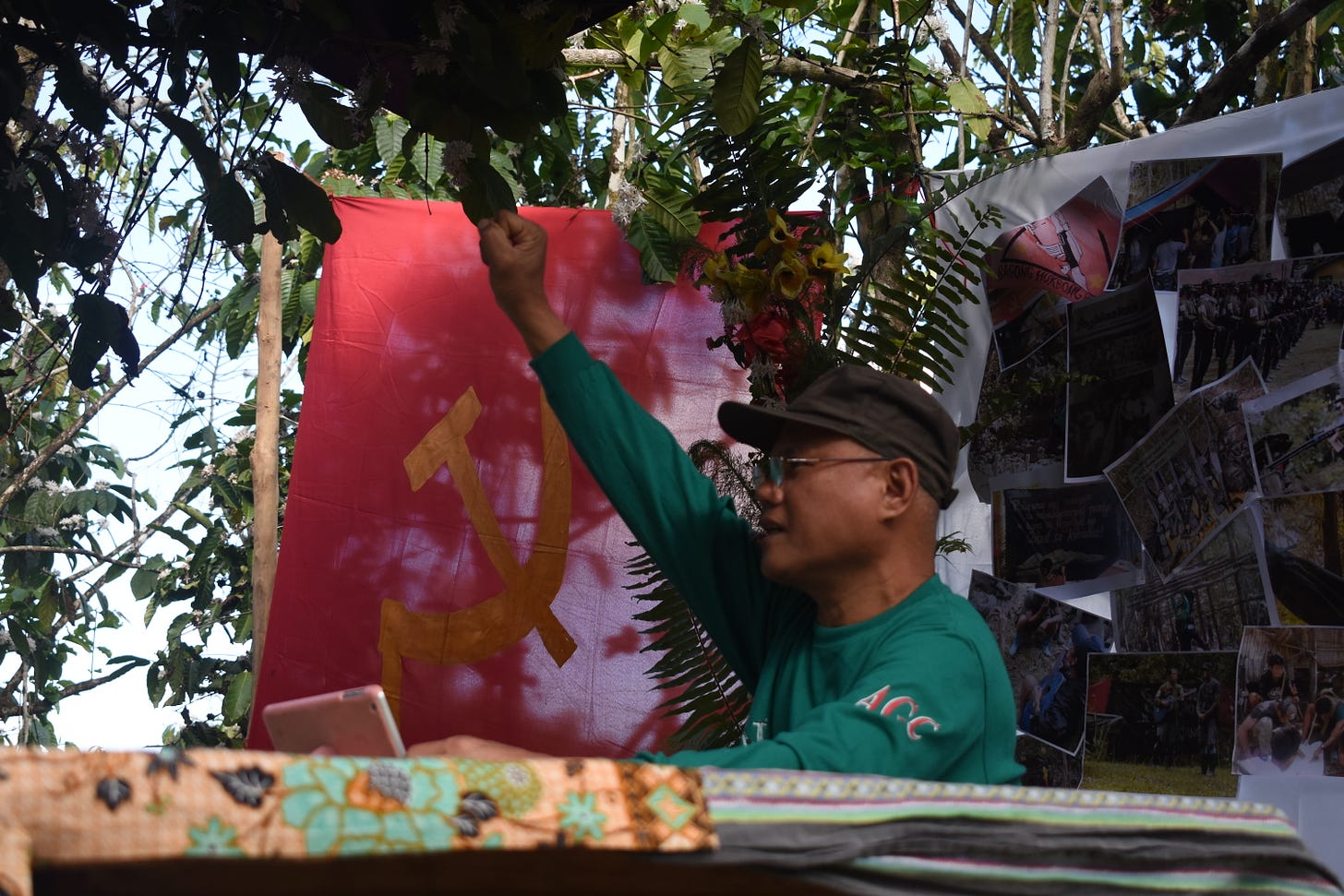
The Communist Party of the Philippines (CPP) and New People’s Army (NPA) are involved in one of the world’s longest-running insurgencies, and for over 50 years Red fighters have been waging armed resistance against the Philippine government and security forces.
The recent election of Ferdinand “Bongbong” Romualdez Marcos Jr was highly symbolic given how his father’s policies and particularly his declaration of martial law in the early 1970s helped fuel the nascent stage of the communist guerrilla rebellion. Marcos Jr, his administration, and the military have taken hardline public positions in recent months and have promised to turn up the tempo of counter-insurgency operations. This has involved intensified efforts of tracking prominent CPP-NPA members, with one area of focus being Negros Island which is part of the Visayan Islands in central Philippines.
According to the Armed Forces of the Philippines (AFP), at least eight NPA fighters have been killed between March 23, 2021, and October 10, 2022, in Negros. Since the start of October, at least six clashes have taken place on the island and thousands of people have fled the fighting in parts of Negros. Earlier this year, the AFP claimed that the NPA’s strength in Negros Occidental has halved.
The NPA has five fronts in Negros. These include Central Negros Front 1 and 2 as well as the Southwest Negros Front. Authorities declared that they had dismantled the Northern Negros Front last year and the South East Negros Front the year before. The NPA denies this. Narratives of clashes are often similarly disputed — the NPA sometimes claims that the AFP conducts fake encounters or kills civilians who are then referred to as NPA members. The AFP says that its operations are legitimate and that the NPA groups in Negros are criminals who target the community.
Militant Wire was able to interview Juanito Magbanua, a prominent guerrilla leader and spokesman of the Regional Operational Command of the NPA on Negros Island, shortly before he was killed by the AFP on October 10, 2022.
Juanito’s death is a significant blow to the network in Negros and the details surrounding his killing have been intensely disputed by the two sides. The Armed Forces of the Philippines claim that he died in an encounter with security forces, while the CPP alleges he was captured and killed extrajudicially by the AFP. The CPP subsequently honored Magbanua with the highest tribute and red salute.
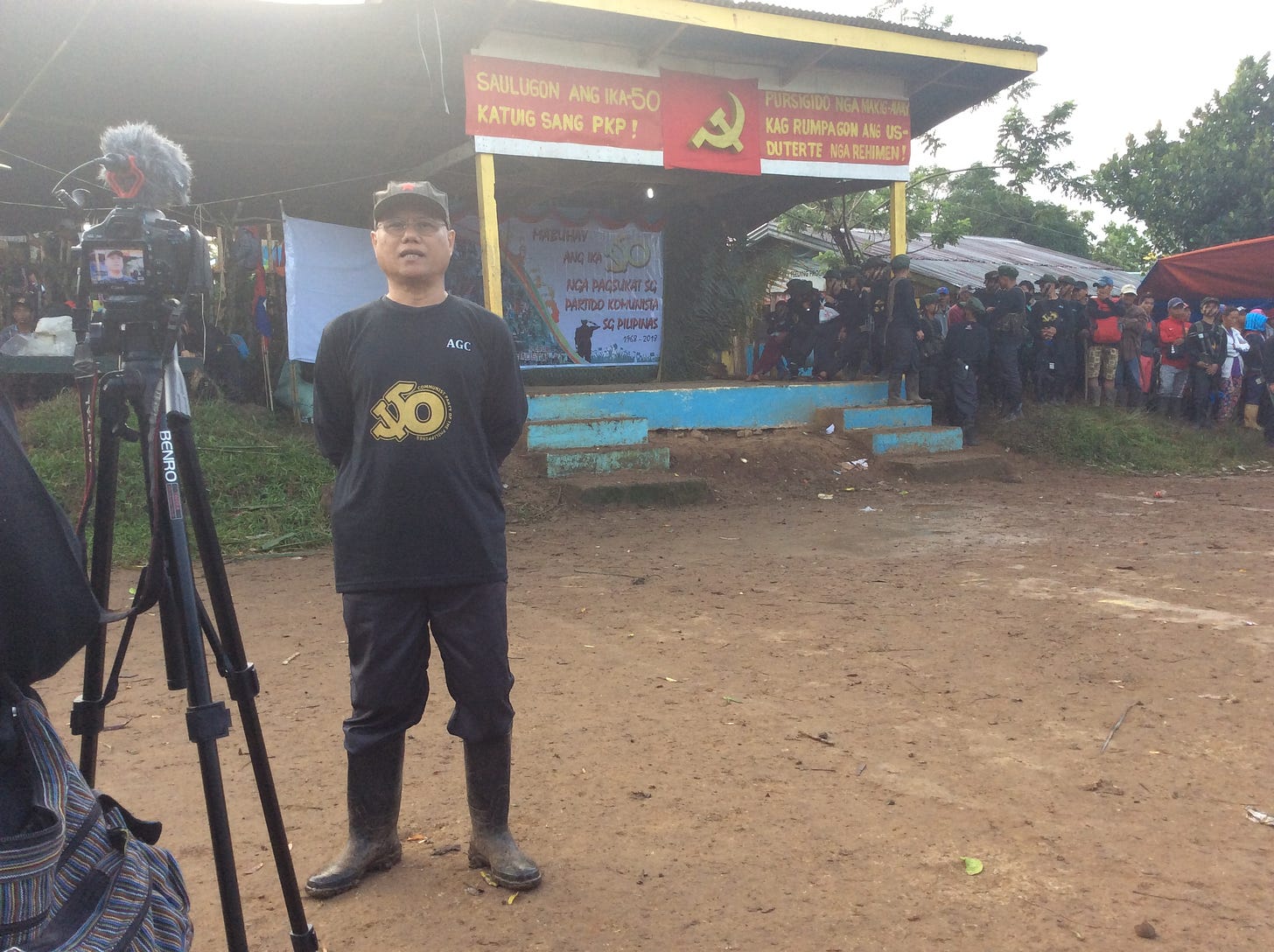
Who are you, what is your personal background, and when/why did you join the NPA?
I am Ka Juanito Magbanua, spokesperson of Apolinario Gatmaitan Command, the Regional Operational Command of the New People’s Army in Negros Island. I was in college when I was recruited to the Kabataang Makabayan (or Nationalist Youth – an underground youth mass organization) in 1983. As a KM member then, my task was to arouse, organize, and mobilize the youth, especially during that time when the anti-Marcos dictatorship movement was very strong. KM recruitment was also part of my task. Due to my commitment to my revolutionary tasks, I was recruited into the Communist Party of the Philippines (CPP) the same year. A few years later I became part of the Urban Partisan Unit. In 1994, I joined the New People’s Army (NPA).
How specifically were you recruited? What positions have you held as you climbed the ranks of your regional NPA group?
As a Party element, I was deployable to any field of work assigned by the Party. I started out as a squad leader in one of the units of the NPA in Negros. Later on, I would become commanding officer of the guerrilla fronts in South Central, North, and Southwest Negros. I was also assigned under the Regional Military Staff, particularly in charge of training and ordnance. In 2010, I became the spokesperson of the AGC-NPA Negros, a function I still perform up to this day.
Can you tell us about the history of Negros Island NPA?The first attempt of the Party to establish guerrilla warfare on the island was a few months after the New People’s Army was founded in 1969. It did not flourish because the preliminary NPA squad mounted a premature military action even if the mass base was not yet prepared. Warlord Armin Gustilo of Cadiz City in the northern part of Negros immediately got wind of them and sent the Philippine Constabulary. The unit found themselves in a purely military situation until they were forced into battle in the mountains of Victorias City, Negros Occidental. Leading cadre Ka Apolinario “Boy” Gatmaitan was arrested and then killed during this incident.
It was in 1973 that the NPA was successfully organized in Negros Island when the national leadership of the CPP sent Comrade Pendong (Edmundo Legislador) to Negros. With the help of KM members, church people, peasants, and settlers in Southwest Negros (part of Negros Occidental), the peasant masses warmly embraced the NPA in their area. Farmers and settlers have long yearned for a defender of their land and livelihood as despotic landlords forcefully grabbed their land. Under those conditions, the NPA Negros was brought forth. Through the CPP’s guidance and absolute leadership, NPA Negros further expanded to Southeast Negros (part of Negros Oriental) in 1974. By 1984, the NPA Negros was comprised of company-sized guerrilla fronts in North, Central, and South Negros.
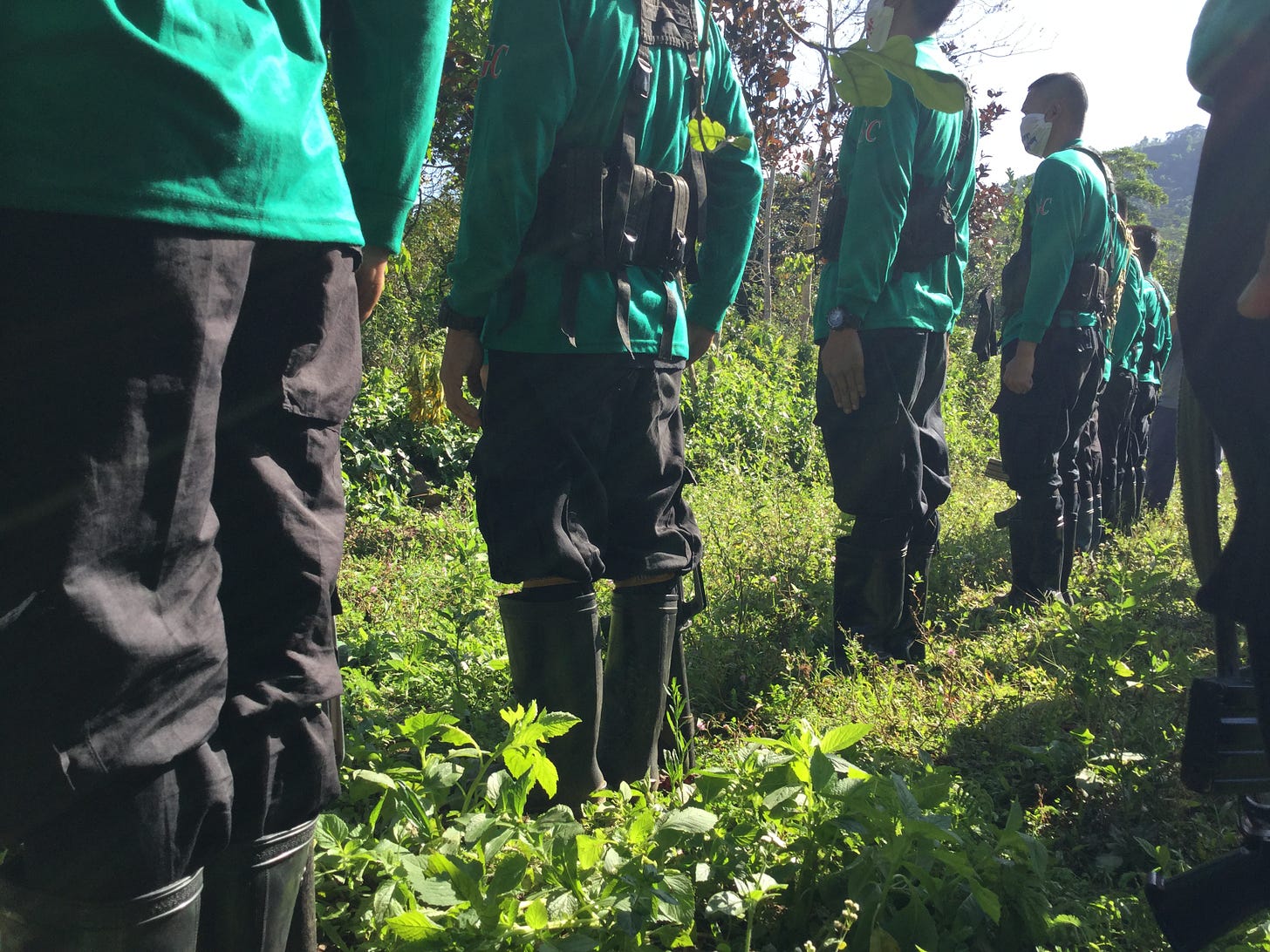
What is the NPA fighting for at the national level? What is your regional NPA network fighting for at the local level? What regional and local grievances do you have against the government, military, and police forces?
Imperialism, bureaucrat capitalism, and feudalism are the three basic problems that plague the Filipino people. The past regimes up to the current US-Marcos II regime have not implemented genuine agrarian reform and the building of basic industries. The economy remains backward and is heavily dependent, particularly on the US, in terms of foreign debt. This is the reason why the Philippines remains to be semi-colonial and semi-feudal in character.
Particularly in Negros, the aforementioned monocrop economy is the expression of such character. The oppressed masses comprise mainly of farmers and farm workers that rely on the sugar industry monopolized by big comprador-landlords. This results in the exploitation and oppression of the people as hunger, poverty, unemployment, low wages, and rampant violation of human rights are prevalent among the masses, which exacerbates the political and economic crisis favorable to a revolutionary situation.
There is no other answer to this widespread crisis brought about by the three basic problems but to wage a national democratic revolution with a socialist perspective. Primarily, the NPA wages armed struggle with the strategy of encircling the cities through the countryside and advances wave upon wave until the seizure of political power from the ruling class. This is the Party’s political line and its commitment to the Filipino people.
What are your thoughts on Marcos Jr being elected and are there historical parallels with his father’s reign?
Firstly, Marcos Jr won the election through a fraudulent election. He manipulated the results of the election through the Automated Counting Machine thus giving him a convincing win by a big margin. Just by cheating the elections, Marcos Jr is already following his father’s footsteps. And just like his father before him, he is sure to be servile to US imperialism.
Based on his first State of the Nation Address (SONA), he did not give importance to genuine land reform and national industrialization which are the key programs to advance the economy. He is not interested to tackle peace with the National Democratic Front of the Philippines in order to solve the root cause of the armed conflict. Instead, he relies heavily on militarizing the rural areas which results in the massive dislocation of peasant communities and widespread human rights violations.
Even in his first 100 days in office, it is highly criticized as extravagant and insensitive while the broad masses are feeling the brunt of the crisis brought about by the pandemic, inflation, and natural calamities alongside the AFP’s so-called ‘heightened operational tempo’. Marcos Jr has not laid out concrete plans to solve the crisis and is instead displaying opulence as he goes from one party to another.
How has the regional Negros Island situation changed since Marcos Jr took power?
As Marcos Jr continues to implement neoliberal policies dictated by the IMF-World Bank, there has been no significant change in the quality of life of Negrosanons. In fact, it has only turned to the worst as Marcos Jr has no concrete plans to arrest the oil price hikes which in turn increases the prices of basic commodities while workers’ wages remain depressed.
The neoliberalization of sugar has also worsened, especially as Negros is a monocrop economy relying heavily on the sugar industry. The regime has only resorted to cheap theatrics and blame games on which individual to scapegoat regarding an impending sugar importation. Unable to solve the sugar crisis, hoarding of sugar has worsened and stirred the economy downwards, devaluating further the real value of already depressed wages.
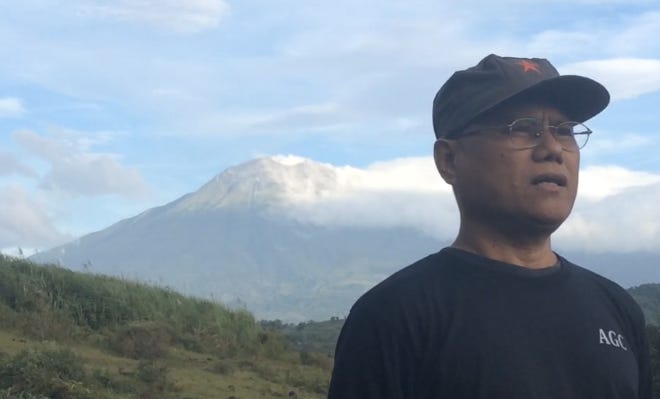
The government has vowed to ramp up the fight against communist insurgents throughout the country, what do you have to say about this?
Since the establishment of the New People’s Army (NPA) in 1969 with more than 60 guerilla fighters and inferior gunpower, the US-Marcos I dictatorship has long aimed to destroy the NPA while it is still small and weak. The NPA, through the absolute leadership of the Party, has been successful in thwarting such plans. Instead, it has been triumphant in expanding from Central Luzon to the Visayas and Mindanao. All other Operational Plan (OPlan) of succeeding regimes – from US-Aquino I, US-Ramos, US-Estrada, US-Arroyo, US-Aquino II, US-Duterte – have all failed. For more than 53 years, the current and past regimes have tried but failed to defeat the revolutionary movement.
What was once a small and weak people’s army has now become a big and strong force that is deeply rooted in the masses. The NPA is now operating in 110 guerilla fronts in 75 provinces out of the total 85 provinces in the Philippines. Based on the current disposition of revolutionary forces in the country, it has now become impossible for the current regime to defeat the armed revolutionary forces as it continues to enjoy the support of the broad masses. The government run by big landlords and compradors and their bureaucrat allies are not interested to address the roots of the problem, and as such the people will always be predisposed to take up arms and join the NPA.
More specifically, the government and military have stated their intention to target your particular regional network. National Security Adviser Secretary Hermogenes Esperon Jr said the remaining CPP-NPA-NDF in Negros Island would soon be defeated. Can you comment on this?
Negros, as a monocrop economy which relies heavily on the sugar industry, is home to despotic landlords who monopolizes vast tracts of land. Social unrest is evident on the island and it has earned the moniker of a “social volcano waiting to erupt”. This is why it is one of the national priorities in the regime’s counter-insurgency measures as it wants to protect the interests of the landed elites as they perpetuate feudalism and to oblige foreign interests.
Esperon is daydreaming in his bluff that the revolutionary armed forces in Negros could be annihilated as this plan is doomed to fail, just like all other oplans before it. For 53 years, the state’s narrative of an ‘NPA soon to be defeated’ has been consistently disproven. The armed struggle primarily waged by the people’s army is continually gaining the support of the Filipino masses as it aims to seize political power from the ruling class for the realization of the national democratic revolution with a socialist perspective. Despite their relentless attacks and propaganda, the NPA continues to enjoy the wholehearted support of the masses eager for genuine social change.
In addition, the AFP seems to be hunting you (Juanito Magbanua) personally and very aggressively. They have described you to the media as “evading” their raids. Why do they want to catch you so badly?
As the Regional Operational Command’s spokesperson, it is my task to articulate our stand regarding various pressing issues, counter the lies churned out by the reactionary regime, and update the masses on the people’s war. The reactionary clique wants to monopolize all media with their lies and sweet words. That’s why they are so desperate in hunting me, as deceivers will always be allergic to the truth. What they fail to see is that as long as oppression and exploitation exists, there will be more like me who will measure up to the task of raising the people’s consciousness and systematically expose this rotten system. There are more like me who will continue the path of armed revolution – no matter how arduous or long the path may be.
The public affairs chief of the 3rd Infantry Division, Army Captain Kim Apitong, called you a “terrorist” and said you are “on the run” and “frustrated” due to a loss of support from the local populations. Additionally, the 303rd Infantry Brigade Commander of the AFP claimed that the strength of the NPA group in Negros Occidental dropped 50% in July. What are your thoughts on these comments?
The reactionaries label revolutionaries as ‘terrorists’ in order to discredit the revolutionary ideals of the movement. The CPP-NPA-NDFP are revolutionary organizations waging a national democratic revolution with a socialist perspective. The real terrorists are the previous regimes and the current US-Marcos II regime. They are the ones who terrorize the people through their intensified military operations which result in widespread human rights violations in the form of killings, massacres, illegal arrests, filing of trumped-up charges, indiscriminate bombings, and harassment of civilians. It seems that they are the ones who are repeatedly frustrated.
If Captain Apitong claims that the strength of the NPA in Negros dropped by 50% in July, then why does the total strength of the combined force of the AFP/PNP reach up to 14 battalions? That’s two infantry brigades composed of five battalions of the Philippine Army, Division Reconnaissance Companies, Scout Ranger Companies, Special Action Force Battalion, Regional Mobile Force Battalion, PNP and the Civilian Armed Forces Geographical Unit (CAFGU) with aerial and artillery support on standby. The deployment of such armed forces only proves that Negros has a strong revolutionary force capable of facing such.
What is the current battlefield situation like on Negros Island? According to news reports over the last few months, the NPA is portrayed as having lost ground across Negros. They say NPA hideouts have apparently been overrun, the local population is providing intelligence to authorities, and there have been a lot of clashes as well as surrenders. Are these reports accurate?
The NPA in Negros vigorously implements its three integral tasks – waging armed struggle, building its mass base, and waging agrarian revolution. There are setbacks where a few of our Red fighters were martyred due to the focused battalion-led military operations but this does not mean that the NPA in Negros has lost its capacity to wage armed struggle. Each NPA unit in Negros operationalizes guerrilla warfare by using the tactics of concentration, dispersal, and shifting. This means that the NPA has no fixed battle line. With the protracted people’s war still in the stage of the strategic defensive, the NPA mounts tactical offensives where the enemy is inferior to its force while steadily gaining strength to eventually wage regular mobile warfare.
Their bloodthirsty butchers may pay a few people or terrorize some in order to force information out of them but this does not mean that they have won the hearts of these people.
Regarding these so-called surrenderees, the AFP/PNP as well as the LGU have long made the Enhanced Comprehensive Local Integration Program (E-CLIP) as their milking cow. Implemented during the US-Duterte regime, the program is said to pay out P50,000 as livelihood assistance and P15,000 immediate assistance for every surrenderee. The majority of the so-called beneficiaries are farmers who were forced to surrender, and the award money was pocketed by the higher-ranking officials.
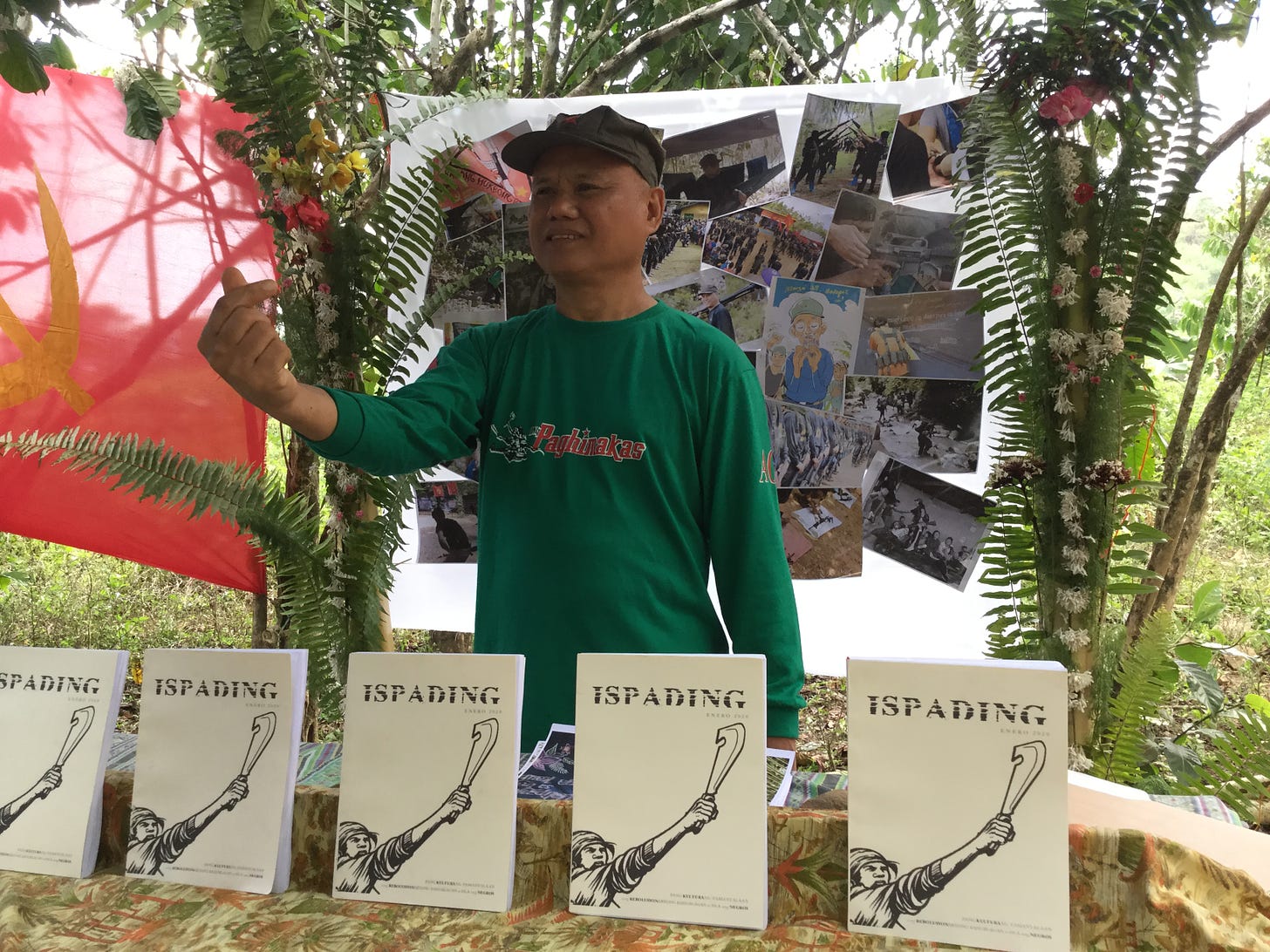
The Deputy Secretary of the Northern Negros Front, Isabella Necesario, was captured in July in Calatrava, Negros Occidental. She’s apparently the third-ranking leader, is that true? How does her capture affect the Northern Negros Front? Is there a capable replacement?
Arrests and death are natural consequences of war. The armed revolution is a just war waged by the people and led by the Communist Party against the unjust and bloodthirsty reactionary war of the neocolonial state. And it is precisely because it is just that the masses are drawn to support and participate in it. The revolution has continued for over 5 decades because it has a ceaseless flow of new blood, where Party cadres and Red fighters are tempered by struggle. There will always be a capable replacement because there will always be revolutionaries borne out of the worsening semi-colonial and semi-feudal crisis. The more the state tries to prevent the revolution, the more it will flourish.
The Philippine army claimed to have killed four leaders of the Central Negros Guerilla Front 2, in Binalbagan on July 6 in Negros Occidental. These are Roel Sagon (30 years old), Rowell Udtuhan (40 years old), Alden Rodgriguez (20 years old), and Nika Ledesma (25 years old). The army said that Lesema was the Squad 3 political leader, Sagon is the squad leader of Central Negros 2, and Utuhan is his assistant. What were their roles in the Front 2 and how did their deaths affect the group?
The Binalbagan 4 were massacred by the bloodthirsty mercenaries of this regime contrary to what they claim as a legitimate encounter in Sitio Amiles, Brgy. Santol Binalbagan. The four red fighters were recuperating from flu in a hut when elements of the 94th IB raided them on the dawn of July 6. At around 8:00 am that day, they were brought in nearby Sitio Kalunakon, massacred, and made to appear that they were killed in an encounter.
We strongly condemn this cowardly and merciless act of reactionary state forces. The four martyrs were hors de combat and were not in any capacity to fight. Clearly, their death was an overkill and a violation of the Comprehensive Agreement on Respect on Human Rights and International Humanitarian Law (CARHRIHL) and Protocols of War.
We deeply mourn the passing of our comrades but we also know that as long as oppression and repression persists, more and more people like them will gladly take up arms and enlist in the people’s army.
What is the NPA’s structure across Negros? How are regional commands set up?
As the regional operational command, the Apolinario Gatmaitan Command leads the NPA in the island. There are five (5) guerilla fronts under it which are the Roselyn Jean Pelle Command (RJPC) – North Negros Front, Leonardo Panaligan Command (LPC) – Central Negros Front, Mt. Carsermon Command (MCC) – South Central Negros Front, Armando Sumayang Jr Command (ASJC) – Southwest Negros Front and Rachelle Mae Palang Command (RMPC) – Southeast Negros Front. Each guerilla front has a definite area of responsibility and mass base. NPA units are also complemented by the people’s militia, self-defense units, and barrio defense committees, supported by revolutionary mass organizations at various levels.
It is important to point out that the NPA in Negros is under the guidance and absolute leadership of the Negros Island Regional Party Committee.
How does a rebel force like yours fight much stronger Philippine military and police forces? What kind of guerilla warfare strategy and tactics make your regional network successful?
The NPA launches extensive and intensive guerilla warfare based on an ever-widening and deepening mass base. We launch tactical offensives that are sure to deliver big blows to the enemy. We employ guerilla tactics against a superior enemy like concentrating a bigger force to launch an ambush or raid, maintaining the element of surprise while executing swiftly, using ruse operations to confuse the enemy, among others. It employs the strategy of 1 versus 10 and tactics of 10 versus 1, where the NPA attacks vulnerable enemy units it is capable of defeating and seizing arms to bolster up its capabilities steadily. The NPA wages offensives that it can win, following the Maoist principle of ‘preserving the self while dismantling the enemy’.
What are the strengths of your armed guerilla resistance network?
The revolution is a mass movement, and the NPA draws its support from the Filipino people. The people cherish their genuine army. Wherever the NPA is, the masses are eager to give their logistical and security support. This is the basis of the political superiority of the NPA in stark contradiction to the isolated mercenaries, criminals, and bloodhounds of the AFP and PNP. This is something that no amount of bombs or high-tech technological advances cannot defeat: the revolutionary fervor of the people to break free from the chains of exploitation.
What are the greatest challenges you face on the battlefield and off?
The NPA suffered setbacks back in the 1980s along the lines of military adventurism and lost a significant part of its mass base due to this. However, during the Second Great Rectification Movement, these errors were criticized and corrected, and the CPP and NPA in Negros reaffirmed its principles guided by Marxism-Leninism-Maoism (MLM). Eventually, the mass base was recovered and the NPA effectively covered the entirety of the island, leading to the establishment of the 5 guerilla fronts waging the protracted people’s war that has overcome the various challenges it faced from the previous puppet regimes up to the current one.
The Negros Revolutionary Portal (a regional media group linked to Negros NPA) recently said: “As New People’s Army (NPA) Regional Operational Command in Negros Island directed Red commanders and fighters to intensify its extensive and intensive guerrilla warfare based on a widening and deepening mass base’ in response to the AFP heightened operational tempo’ guerrilla fronts in Central Negros mount offensives against elements of the Philippine Army and Philippine National Police (PNP).” Can you describe how your network has intensified the fight against AFP in response to this directive? And why was this command issued in the first place?
We issued such command as we reverberate the directive issued by the National Operational Command ‘to intensify its extensive and intensive guerilla warfare based on a widening and deepening mass base’ in response to the AFP/PNP heightened ‘operational tempo’. Each guerilla front must launch tactical offensives that are sure to claim victory such as raids and ambuscades while also mounting attritive actions such as sniping and harassment operations. This is part of advancing the level from strategic defensive to strategic stalemate. The “several blows to the body and occasional blows to the head” tactic refer to the correct ratio of attritive actions to disrupt enemy operations and annihilative actions to confiscate arms from the enemy.
Due to the armed struggle integrated with the tasks of agrarian revolution and mass base building, the people’s war has comprehensively faced the regime’s counterrevolutionary drive due to the NPA being deeply rooted among the masses.
You have accused the government and AFP of human rights abuses and atrocities. Can you explain this to the readers?
In their desperation to preserve their class interests, the ruling clique exploits the AFP/PNP and makes them their lapdogs whose task is to quell resistance among the ranks of peasants, workers, urban poor, petty bourgeoisie, and other oppressed and exploited classes. In order to protect the status quo, the vicious mercenaries result to doing such heartless and craven acts like extra-judicial killings, massacres, illegal arrests, filing trumped-up charges, threatening, and vilification. The AFP/PNP have a long history of committing various human rights abuses even against children and they are further emboldened as the culture of impunity permeates. One of their most recent attacks is the massacre of the Jacolbe family including a pregnant woman and a minor in Sitio Natuling, La Castellana, Negros Occidental last September.
Conversely, the Philippine army and national police accuse Negros Island NPA network of killing innocent civilians. How do you respond to this?
The revolutionary movement strictly adheres to revolutionary justice and follows International Humanitarian Law (IHL). Certain individuals who have wronged or endangered the masses and the revolutionary movement are tried in revolutionary courts. NPA fronts that carry out revolutionary punishments release timely statements issued to the public to explain the crimes committed by those involved. This is very far from the arbitrary killings perpetuated by the AFP/PNP who have claimed a lot of innocent lives in their ridiculous war on drugs and war against terror.
The government seems quite committed to undermining your group using the media. How important is the psychological warfare and media/propaganda aspect of your fight?
The reactionary government is determined to isolate the revolutionary movement, especially in the media. There are efforts to threaten media personalities and dictating to not carry our press statements to blocking our social media accounts. They’ll do anything at great lengths just to silence the revolutionary movement. But the propaganda based on truth is the most effective and is easily grasped by the masses. The people’s war is a war carried out on all fronts, including propaganda.
How does your group recruit and how successful have you been in your recruitment efforts? What segments of the population are you most successful in recruiting and why?
As a semi-colonial and semi-feudal country, the majority of the population belongs to the peasant and working class which are the most oppressed and exploited class. The countryside is home to 75% of the population – the peasant class – who are also the main force of the revolution. The countryside is also where the enemy force is weak that’s why the majority concentration of NPA recruitment is here. The people’s army is essentially a peasant army. In the first place, the national democratic revolution through armed struggle solves the essential problem of land among farmers which is why it is easy for them to support the revolution and join the people’s army. Due to the semi-colonial and semi-feudal character of the Philippines that is felt by the poor on a daily basis, the worsening crisis provides a favorable situation for recruitment among the vast majority of the Filipino people.
The workers, students, intellectuals, and other sectors based in the urban areas who wish to contribute to the armed struggle are also welcome. The oppressive and exploitative system itself is most effective in recruiting people to the armed revolution. The more the ruling class exploit and oppress, the more people see the justness of the people’s war.
Are your fighters mostly from your region or do you have fighters from outside of the island as well?
The revolutionary movement in Negros has a rich history of waging armed struggle. By actively waging revolution and armed struggle, it has produced a considerable number of Red commanders and fighters. The NOC deploys its forces depending on the particular circumstances of each region. The revolution is fought at a national level in which various regions mutually aid each other to advance the people’s war.
Do you ever receive inquiries from persons outside of the Philippines interested in joining the NPA? Do you receive solidarity and support, symbolic, material, or otherwise from foreign/international communist organizations?
The Communist Party of the Philippines, guided by Marxism-Leninism-Maoism, adheres to proletarian internationalism as one of its fundamental principles. While it is open to foreign solidarity and support, the CPP-NPA mainly operates through self-reliance through being wholeheartedly supported by the Filipino people. The victory of the national democratic revolution and the subsequent socialist construction is the CPP’s main contribution to the international proletarian revolution.
What is your regional NPA network’s plan for the future in fighting against the Marcos Jr government?
The Filipino people anticipate that like his father, Marcos Jr will establish a despotic and corrupt regime that is pliant to the behest of its imperialist overlords. This will cause gross suffering on the broad masses of the people.
Recently, the Chief of the Armed Forces of the Philippines called to heighten their “operational tempo” in order to end the insurgency problem of the country. This would translate into mobilizing bigger troops in combat operations, and bombing using howitzers, mortars, cannons, and fighter jets. This would only result in grave rights abuses and the destruction of properties and the environment.
There is no other course but to militantly confront and frustrate military operations through launching tactical offensives to win more firearms and other military equipment, strengthening the mass base, recruiting more red fighters, and leading anti-feudal struggles to alleviate the economic life and well-being of the masses.
The Red fighters have waged an insurgency for over 50 years, and there seems to be no end in sight for the conflict. How much longer will the war go on, and will you prevail in this struggle?
The armed struggle primarily waged by the NPA is by and for the people. It is under the guidance of the CPP which is why it has gained the broad support of the people. As long as the semi-colonial and semi-feudal system persists, the armed revolution of the masses will continue to intensify. No matter how grueling or long the path may be, the NPA, together with the masses and with the guidance of the CPP, is determined to wave the banner of revolution into victory.
Is there anything else you would like our readers to know about yourself and your group? Or any other comment you would like to add?
The Apolinario Gatmaitan Command, Regional Operational Command of the New People’s Army in Negros Island, expresses its gratitude to the Militant Wire for giving us a platform to air out our views regarding pressing issues. Through this interview, we are able to refute the desperate lies spewed by the current fascist regime in order to discredit the revolutionary movement and mislead the people. We also hope that readers of this article from other countries can understand the justness and correctness of the people’s war in order to break the shackles of oppression and exploitation.
Thank you for taking the time to answer our questions.

